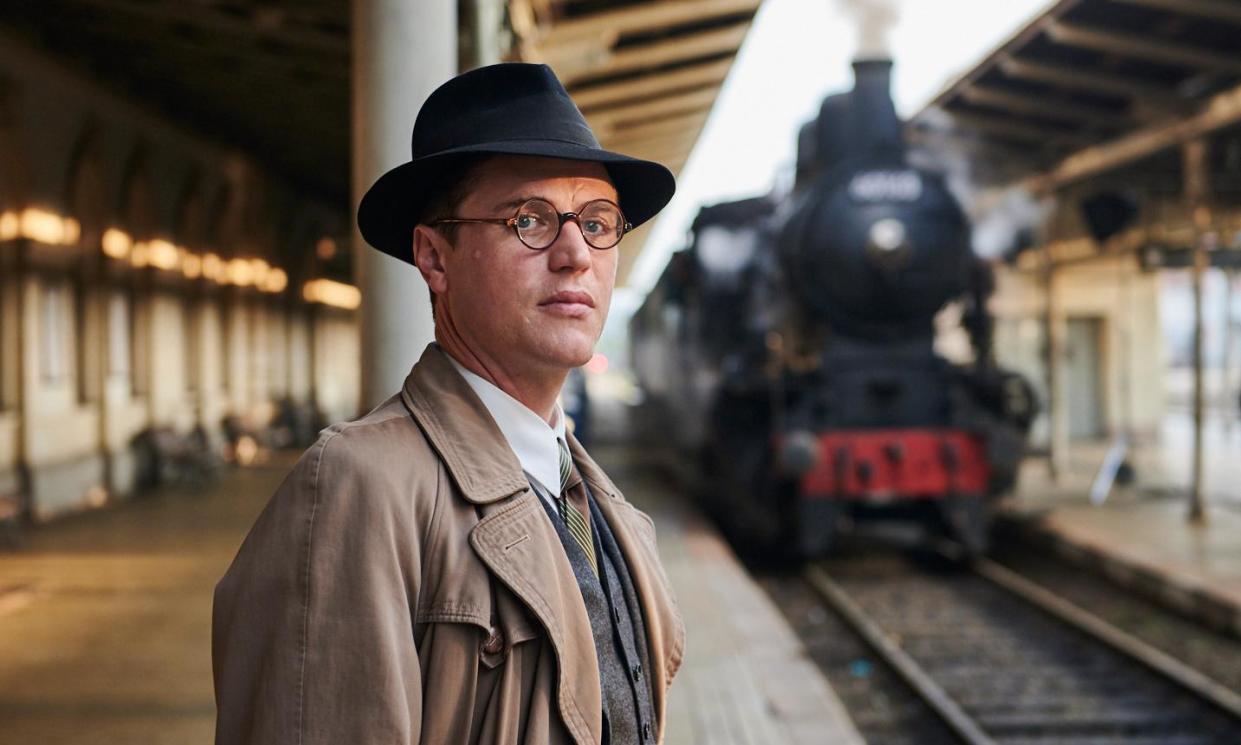Kindertransport success of ‘Britain’s Schindler’ celebrated in new film and exhibition

The achievements of Sir Nicholas Winton, who saved the lives of 669 Kindertransport children by setting up an escape route from Germany, will be celebrated anew on New Year’s Day, with the release of the film One Life, starring Anthony Hopkins.
Young actors will be playing the small escapees on screen, alongside Johnny Flynn, cast as the young Winton. But the stories of the children are not over. A number of them still clearly remember the journey, and their faces, now captured for the National Portrait Gallery, provide a fresh and clear testament not just of their childhood trauma, but of the varied lives they went on to live.
“The portraits are fabulous,” Winton’s grandson Laurence Winton told the Observer. “It is so important that a story which is seen as part of history can be made into a real thing again, so people can connect with it.”
The subjects, in their 80s and 90s, were photographed by Simon Hill, who was commissioned by Warner Brothers, makers of One Life. The resulting 11 portraits, including one of the politician Lord Dubs, will be unveiled at the London gallery on Monday before the launch of an online exhibition to herald the film’s British release.
“They all told me they had been extremely humbled by what had been done for them by Sir Nicholas, and how fortunate they felt,” said Hill, who took three studies of each face, including one shot in which they were asked to hold an object they had kept from that time. “I’d like to shoot more of them if possible. It would be a wonderful legacy of the film. Now is the time to mark their stories.”
Sir Nicholas, latterly nicknamed “the British Schindler”, rather against his own will, died in 2015 aged 106. As a London stockbroker in the late 1930s, he had travelled to Germany to see if he could help, prompted by deep foreboding about the harm Hitler’s regime was capable of inflicting.
“Hopkins’s performance as my grandfather is fantastic,” said his grandson. “He really gets the essence of him. He was a pragmatic man who never wanted to put himself forward. The filmmakers have done a brilliant job getting the details right. This is something my late mother, Barbara, really cared about. It’s why she wrote the biography of her father that the film is partly based on. She also wanted to make it clear it was not just him. Others were already organising.”
Winton had met many of the surviving Kindertransportees before, he said, at events held at his grandfather’s home. “We know it was a lottery. Down to chance who got out. Of course you can now pick out some of the most high-achieving survivors, but it was worth doing just because it was the right thing to do.”
Hill said he was struck by the variety of the personalities he photographed: “But they all talked about the courage and strength of their parents in sending them away and of their gratitude to their foster parents.”
Alexandra Greensted, he added, had a “very strong presence”. “And if you met Dr Lisa Midwinter, you would immediately know she was in a caring profession. She is very calm and she brought along her old train ticket as a memento, her “ticket to freedom”, with her photo on it as a little girl.”
“Alf Dubs has the confident attitude of a politician who is used to being photographed, but I didn’t want that. He leans forward, which is very much him, and is looking off to the side, so there is more vulnerability there. He is a very accomplished individual, and he brings that with him. But I wanted something more fragile. I wanted Alf the child, which I am not sure he knew he would give me.”
Another one of Hill’s favourites portraits is of John Fieldsend BEM. “He has such a characterful face.” Gerda Svarny arrived in her wheelchair, so Hill took his camera down below her eyeline. “I think she preferred that. I don’t think she was comfortable with being photographed until then.”
Two of the Kindertransportees carried photographs of their young selves, something Hill found very moving. “It shows the value an image can have. On the other hand Professor Peter Schiller brought his childhood pencil case with him and was holding it tight to his chest in one pose. It still connected him to his past life.”

 Yahoo News
Yahoo News 
